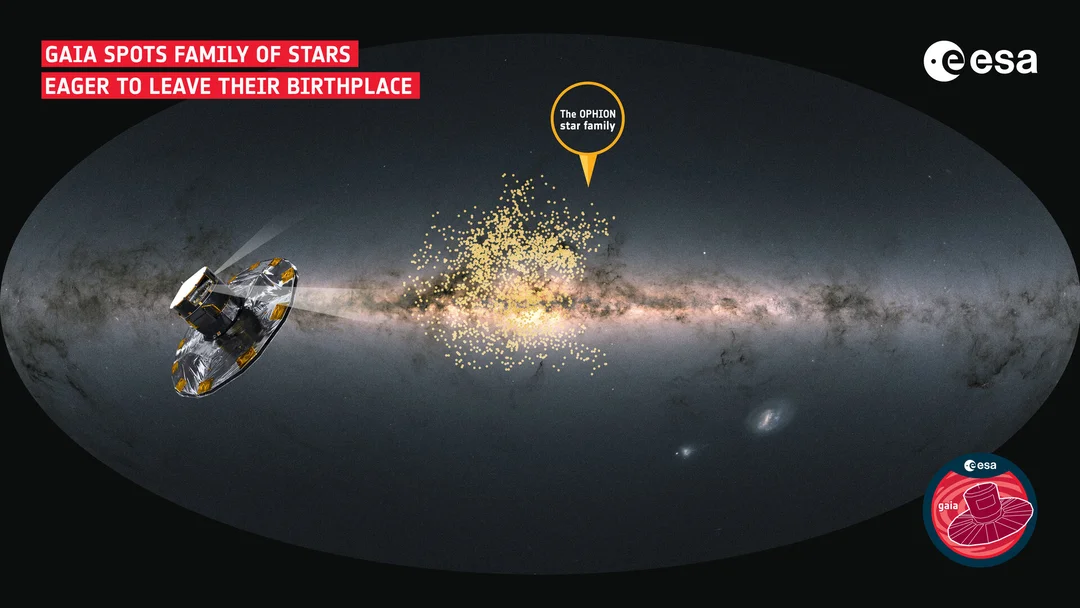
Astronomers Baffled as Young Star Cluster ‘Ophion’ Rapidly Dissolves: A Cosmic Mystery Unveiled by Gaia
In a surprising cosmic twist, astronomers are scratching their heads over a massive star family named Ophion. Unlike typical star clusters that stay together for billions of years, Ophion's 1,000+ young stars are scattering across the Milky Way at an astonishing rate. This unprecedented behavior is shaking up our understanding of how star families evolve.
通常星团中的恆星都会待在一起数十亿年,但是这个名为Ophion的星团里的一千多颗年轻恆星却正在以更快的速度各奔东西,这是对天文界星群演变认知的一次颠覆。
The European Space Agency's (ESA) Gaia mission, known for its detailed mapping of the Milky Way, unearthed this peculiar phenomenon. Data from Gaia revealed that Ophion's stars are not just drifting apart; they're doing so in a chaotic and uncoordinated manner, baffling scientists.

"Ophion is filled with stars that are set to rush out across the galaxy in a totally haphazard, uncoordinated way, which is far from what we’d expect for a family so big," explains Dylan Huson of Western Washington University (WWU), the lead author of the discovery paper. "What’s more, this will happen in a fraction of the time it’d usually take for such a large family to scatter. It’s like no other star family we’ve seen before."
To pinpoint this unusual group, Huson and his team developed a model called Gaia Net, leveraging Gaia's spectroscopic data to study young, low-mass stars near the Sun. This innovative approach allowed them to identify Ophion, highlighting the power of data-driven discovery in modern astronomy.
那么,是什么原因导致Ophion星团的恆星分裂解体呢?
Several hypotheses have emerged to explain Ophion's erratic behavior. One possibility is the influence of nearby massive gatherings of young stars, whose energetic events and interactions could have disrupted Ophion. Another clue lies in signs of past supernova explosions in the region. These explosions could have swept away material from Ophion, causing its stars to accelerate and scatter.
"We don’t know exactly what happened to this star family to make it behave this way, as we haven’t found anything quite like it before. It’s a mystery," says co-author Marina Kounkel of the University of North Florida, USA.
Despite the puzzle, the discovery is prompting a re-evaluation of how star groups are identified. Traditionally, astronomers have focused on clustering stars with similar movements. Ophion, with its disparate velocities, would have slipped through this net. This finding underscores the vital role of large, high-quality datasets like those from Gaia in unraveling the complexities of the cosmos.
With Gaia’s observations concluded in March, this marks a new era for astronomical research, new discoveries are expected with Gaia's latest data release.

Is Ophion an outlier, or are there other rapidly dissolving star families waiting to be discovered? This cosmic enigma invites further investigation and might reshape our understanding of stellar dynamics. Share your thoughts and theories in the comments below!